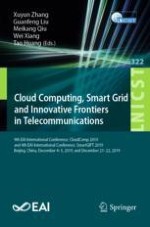2020 | Book
Cloud Computing, Smart Grid and Innovative Frontiers in Telecommunications
9th EAI International Conference, CloudComp 2019, and 4th EAI International Conference, SmartGIFT 2019, Beijing, China, December 4-5, 2019, and December 21-22, 2019
Editors: Xuyun Zhang, Guanfeng Liu, Meikang Qiu, Wei Xiang, Tao Huang
Publisher: Springer International Publishing
Book Series : Lecture Notes of the Institute for Computer Sciences, Social Informatics and Telecommunications Engineering
